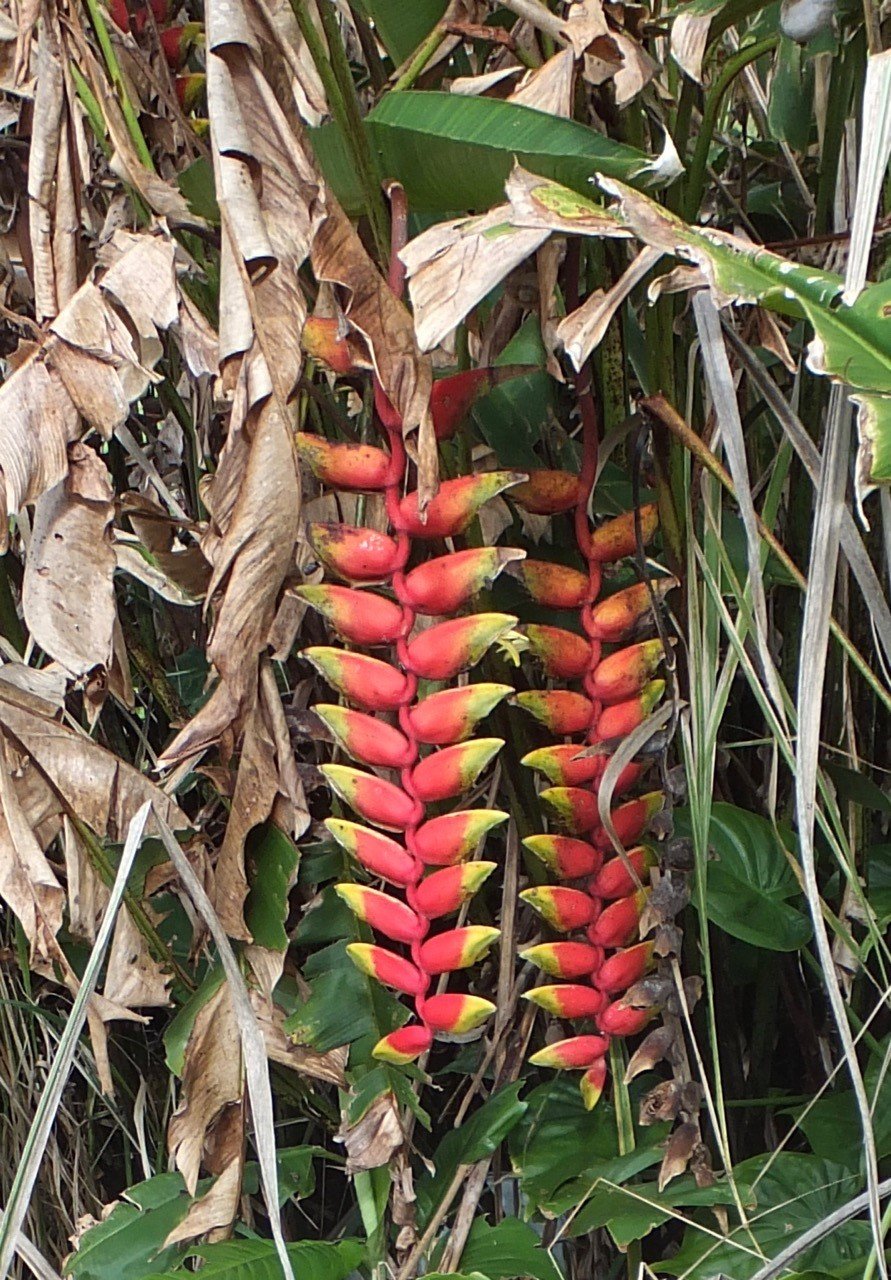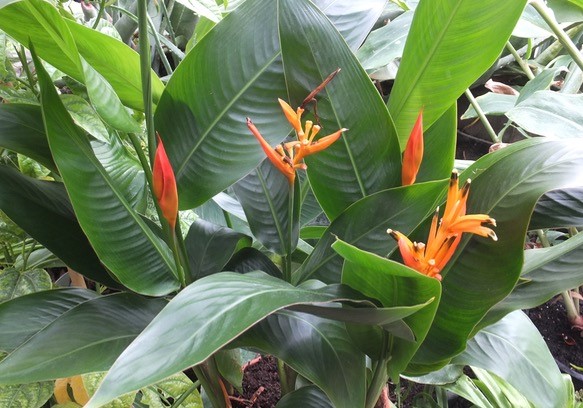
I usually write ‘you need a warm greenhouse for such or such a plant’. Annoyingly in this genus the species you really want, well they really need a hot tall palm house to succeed. Amongst the most impressive displays coming from the tropics the majority of Heliconias are awkwardly a bit on the large size for most of us to fit in. Rather as we find with bananas which they so closely resemble, and indeed these two are closely related with Heliconia wagneriana of Panama being known as Wild Plantain. (Plaintains are a common form of banana used for cooking.) Heliconias also resemble another close relation, the Bird-of-Paradise flower, Strelizia reginae, with similar leaves and inflorescences (and just as slow to flower from seed). This comes from S. Africa though whereas Heliconias are mostly from South America.
Amongst the more greenhouse friendly species is H. psittacorum from Guayana and Brazil, the Parrot’s Flower or Plantain. Conveniently almost compact eventually only making a clump about a metre across and high this is an excellent foliage plant, with a bonus. A succession of neat spikes, iridescent bracts in brilliant orange and red shimmering like parrots’ plumage. H. angusta/angustifolia from Brazil, also almost compact, has boat shaped orange red bracts with creamy white flowers followed by orange seeds that ripen blue. H. stricta, the dwarf Jamaican, is one of the smallest growing with striking red upward pointing ‘blooms’.

Heliconias are not difficult to grow other than needing year round warmth! Preferring a rich loamy compost in a large tub these are generally problem free though molluscs sometimes try a younger leaf, and keep watch for mealy bugs. They enjoy generous watering with liquid feeding during the growing season, to be just moist in wainter, and the large leaves benefit from an occasional wiping over.
For the collector there’s H. metallica from Columbia with a metallic sheen to its leaves, this makes three metres in the wild but can be kept shorter in a confining tub, and compact cultivars are becoming available though more in USA than UK. With warmth and a tall roof you could have the impressive H. caribaea from Martinique, its even more flamboyant form purpurea or H. humilis, the Lobsters Claw from Brazil. And if height and heat really are no problem then you really really want that Beaked Heliconia, H. rostrata…


